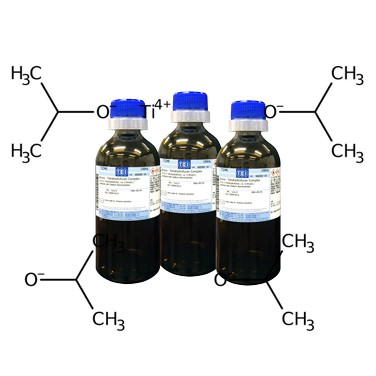TCI DualSeal Bottles: Two Layers for Safety and Protection
Some chemicals, especially those used in organic synthesis, are sensitive to air and moisture and react — sometimes violently — when exposed to oxygen or water. In 2017, TCI introduced their patented DualSeal reagent bottles to provide an air-free environment for these highly reactive reagents, making it possible to handle them in a safe and effective manner.
The blue outer cap has an inner Teflon layer that helps maintain an air-tight seal, even when the inner septum has been pierced. The colorless inner cap septum has two layers of rubber and one of highly chemical-resistant PTFE (polytetrafluoroethylene). The septum is large enough for easy access and self-seals after being pierced to maintain conditions inside the container, even after repeated use. The DualSeal cap is attached or removed normally. For everyday use, remove just the outer cap, and remove (unscrew) the inner cap when you dispose of the bottle.
Steps for Safe Usage
- Clamp or otherwise secure the reagent bottle before opening
- Carefully unscrew the outer cap and place it near the bottle
- Insert a needle into an inert gas line (Ar, N2) through the Teflon seal
- Retrieve the amount of reagent needed
- Purge the headspace with inert gas and remove the needle
- Replace the outer cap and screw tightly into place (do not place tape or other material between the caps — it can significantly reduce seal quality)
- Unclamp the bottle and return it to storage
To remove the inner cap for disposal:
- Clamp or otherwise secure the bottle and remove the outer cap
- Grasp the inner cap and remove it; use pliers as needed
- Avoid spillage; be aware that residual chemical may exist on the underside of the cap
- Dispose of caps and bottles cautiously after removing any remaining chemical
TCI Reagents Packaged in DualSeal Containers
| Reaction | Chemical | Cat. No. |
|---|---|---|
Reductions | Lithium Aluminum Hydride (10% in Tetrahydrofuran) Lithium Borohydride (ca. 4 mol/L in Tetrahydrofuran) Triethoxy[5,5,6,6,7,7,7-heptafluoro-4,4-bis(trifluoromethyl)heptyl]silane 90+% Lithium Triethylborohydride (ca. 12% in Tetrahydrofuran) Sodium Bis(2-methoxyethoxy)aluminum Dihydride (70% in Toluene) Triisopropylsilane 98.0+% | L0170 L0186 T3246 L0190 S0467 T1533 |
Bases | Sodium Methoxide (ca. 5 mol/L in Methanol) Potassium tert-Butoxide (12% in Tetrahydrofuran) Sodium Bis(trimethylsilyl)amide (contains 2-Methyl-2-butene) (38% in Tetrahydrofuran) Lithium Bis(trimethylsilyl)amide (ca. 26% in Tetrahydrofuran) | S0486 P1619 H0894 H0915 |
| Lithiation | Lithium Chloride (2.3% in Tetrahydrofuran) | H0915 |
Lewis Acids | Boron Trifluoride, Ethyl Ether Complex 98+% Titanium (IV) Chloride (14% in Dichloromethane) Zinc Chloride (ca. 7% in Tetrahydrofuran) | B0527 T2052 Z0019 |
| Nucleophiles | Diethylzinc (ca. 17% in Hexane) Diethylzinc (ca. 15% in Toluene) | D3214 D3902 |
| Solvent | 1-Butoxy-2-propanol 96+% | B0864 |
| Protection | N-Trimethylsilylimidazole 98+% Bromotrimethylsilane 95+% | T0585 B1087 |
| Catalysis | Tetraisopropyl Orthotitanate | T0133 |
Visit fishersci.com/TCIpromo or fishersci.ca/TCIpromo to learn how you can get one TCI product at no additional cost when you buy two. (Excludes healthcare customers.)

Content provided by:



